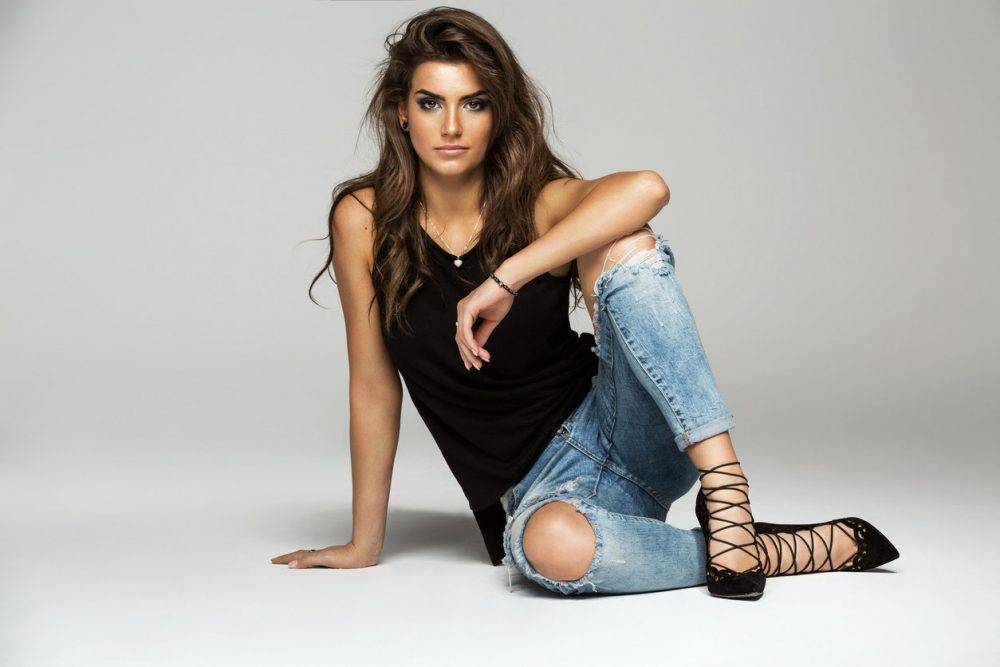
Portfolio is a set of professionally clicked pictures of a model invarious dresses, looks make-up and expressions. It’s like a passport to modeling world.
Good portfolio gives a chance to the client or agency to visualize that model in their forthcoming shoot so that they can choose her accordingly. A good portfolio shot by an experienced photographer not only enhances your chance of getting a good break in fashion industry but also gives you a right start and confidence. Since portfolio is your first step to enter into the glamour world it has to be handled very carefully. It should highlight your beauty , moods, expressions and emotions.
Your portfolio is critically important for your career because it’s competing first.
- Tips to look better during photo sessionsA portfolio shoot is a team effort, so be sure to discuss what you are trying to accomplish before and during a shoot. Remember, it is only when you communicate and cooperate will you be able to create great-looking images.
- Keep jewelry to a minimum – The same necklace in different shots and different outfits detracts from the impact of all of those images.
- Wear solid colors – Avoid clothes that are covered with patterns and prints.
- Make sure the clothes fit – Swimsuits, for example, should be snug, with no gaps showing when they move. They also shouldn’t be too tight.
- Vary your hair style – When trying to create a variety of looks, short hair can present a challenge. For variety, try a wig. Don’t forget hats– except for cowboy hats, which are way overdone. Hats can change the look of a model’s portfolio photos, too; look for fun and interesting hats in thrift and discount stores.
- Makeup – Vary your makeup and color when changing hairstyles or outfits. This makes each portfolio image look truly different.
- Footwear – Wearing the right shoes can make as much a difference as the right makeup. Ask a model to bring along at least one pair of shoes with the highest heels they have–or can borrow. It changes the way they stand and gives them a bit of height that all but the tallest models can use.

Posing Tips
- Do not hold your breath – during a photo session for a pose. The concentration usually shows in the picture.
- Hold in your stomach – to give a more toned appearance to the abdomen (even if you are in great shape).
- Maintain a good posture – Most people, including models, do not have very good posture. Unless you’re going for a casual look, keep your back straight and your shoulders up.
- Strike a pose – Don’t keep both arms entirely straight unless directed to do so for a specific pose. Bend one or both arms, even if only a little, to make the pose look less artificial. Likewise, don’t keep both legs entirely straight.
- Don’t always look straight at the camera – Instead, use a variety of head and eye positions: Try turning your head, tilting your neck to one side or the other, or looking off to the side for some poses.
- Don’t use a big smile for every pose – Sometimes try a small smile, a pout, a laugh, a scowl, or even a frown, to give some variety to your facial expressions.
- Listen to what the photographer tells you – He can see you through the camera. You can’t.
Preparing a Portfolio Presentation

- Your portfolio should be organized and visually appealing – Loose photos, cut up contact sheets, loose slides, torn or bent photos, are signs of a poor portfolio presentation. Just as an accountant wouldn’t present his resume on a crumpled piece of paper, you shouldn’t have a sloppy portfolio. Your portfolio represents you; make it a lasting, positive impression.
- Number of Photos – Your portfolio (or “book” as it’s sometimes called) should have between 6 and 20 shots of you or work you are in. There should be a variety of poses and a combination of headshots, half body shots, and full body shots.
- Kinds of Photos – A high quality headshot is a must. After you get some experience, you should have a couple different headshots showing different hairstyles and makeup looks. Your book should also contain shots of you showing the kinds of work you want to do. If you want to be a swim wear model, have swim wear shots, not high fashion, in your book. Versatility is good but don’t get caught up in trying to be everything. Stick to what you are suited for and are interested in.
- Sizes of Photos – Models should have 11×14 cases with either 8×10 or 11×14 photos. Actors should have 8×10 cases with 8×10 photos. Most serious models don’t use 5×7’s or smaller in their books.
- Before approaching a photographer to hire them to work for you on your portfolio, have a good idea of what you want and what you can afford. Remember, If at all possible, you don’t want just one photographer to contribute every shot to your portfolio. Start with a roll or two from one photographer and go from there.
